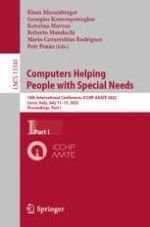The prevalence of mental health problems has been increasing in the past decades worldwide [
10]. Over their lifespan, 29% of the global population is affected by some form of mental disorder [
36], with affective disorders, such as depression and anxiety disorders, being the most common forms [
29]. As Denecke et al. [
12] emphasized, we further have a global shortage of professionals delivering mental health services. As a result, affected individuals often face long waiting periods before they can receive adequate treatment [
9] and less than half receive proper treatment at all [
17]. This can be especially harmful for people with age-related depression, as there is presumably a high rate of under-reporting due to the high stigmatization of the illness in elderly people and as the risk for suicide rises strongly in relation to age [
15]. Therefore, new solutions have to be found to provide low threshold, scalable forms of mental health support. Those solutions should be applicable to different forms of mental health problems and should be accessible and usable by a broad and diverse user base.
To cope with the shortage of face-to-face therapy options and the rising prevalence of mental disorders, research on internet-based therapy approaches has been going on for several decades. Approaches exist in the form of online psychotherapy, email-based, app-based, or chat-based therapy solutions. While some solutions provide automated therapeutic methods for self-guided interventions, others function as a communication medium between therapist and patient and are intended to be used adjunct to therapy [
7,
26]. As they are easy to access and discrete in usage, those solutions provide one possible strategy to encounter the issue of increasing mental health problems [
3]. As a next step, CA-based therapy has become one focus of research in this area. The primary type of psychotherapy implemented digitally is CBT [
6]. In recent years several internet-based CBT solutions have been shown to be effective in improving depressive symptoms and life satisfaction [
2,
25,
28,
39]. CBT is based on the assumption that cognitive distortions contribute to the development and maintenance of mental illnesses [
5,
14]. Therefore, the central goal of CBT is to identify the patient’s problematic patterns in cognition and behavior to modify those through cognitive reconstruction and behavior changes. As a trans-diagnostic intervention, CBT can be successfully applied to many psychiatric conditions, as its underlying principals apply to anxiety disorders, depression, eating disorders and paranoid delusions [
38]. Nevertheless, from its beginnings CBT was created with a focus on depressive disorders [
41]. In mental health, conversational agents (CAs) such as chatbots (CBs) and voice assistants (VAs) can be a more interactive way to inform patients on CBT techniques and provide information on mental well being [
10]. Furthermore, CAs can help to reduce cost, improve efficiency and reduce time spent assessing the well being of patients [
22]. Moreover, CAs can be used as a more user friendly way of screening for mental health issues in comparison to diagnostic scales [
10]. While existing CA-based solutions showed promising results, the usability of VA-based CBT with a standalone voice user interface (VUI) has not yet been analyzed - especially not with elderly users. This is, however, crucial, as a good usability leads to better acceptance and therapy adherence [
32]. Therefore, we propose a novel concept for VA-based CBT for elderly people with an onset depressive disorder and investigate the perceived usability with the target group. Specifically, we want to investigate how the usability of a VA-based system for CBT delivery compares to the usability of CB-based CBT delivery.
In Sect.
2 the current state of research of CA-based CBT will be laid out. Subsequently, Sect.
3 introduces the conceptualization and interaction design of a CA capable of delivering selected CBT methods. Section
4 describes a conducted study, followed by a thorough discussion of results, implications and shortcomings. Section
5 completes the paper through a concise conclusion and an indication of future work.
